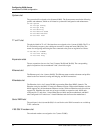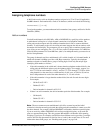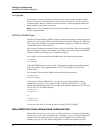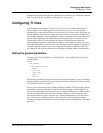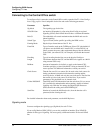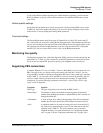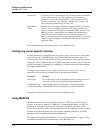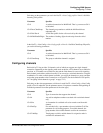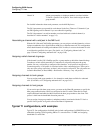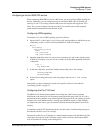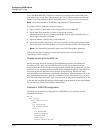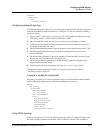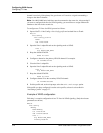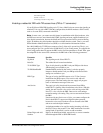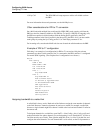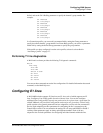
3-12 MAX 6000/3000 Network Configuration Guide
Configuring WAN Access
Configuring T1 lines
For detailed information about each parameter, see the MAX Reference.
The Ch N parameters are repeated for each channel in the line. (There are 23 channels if you
use PRI signaling and 24 channels if you use robbed-bit signaling.)
The Ch N # parameter is an add-on number associated with each switched channel (as
described in “Add-on numbers” on page 3-5).
Associating a channel with a slot/port in the MAX unit
With the Ch N Slot and Ch N Prt/Grp parameters, you can assign a switched channel to a slot or
slot/port combination for a digital modem, AIM port, or Ethernet network. This configuration
affects both inbound call routing and outbound calls. In effect, it reserves the channel for calls
to and from the specified slot or port. (For details, see “Configuring inbound calls” on
page 3-59 and “Configuring outbound calls” on page 3-69.)
Assigning nailed channels to groups
If the channel is nailed, Ch N Prt/Grp specifies a group number to which the channel belongs.
To make use of this nailed connection, a Connection or call profile references the group
number. You use a call profile to configure a Host interface. A call profile is analogous to a
Connection profile. A call profile is associated with a video-conferencing host. There can be
only one video call up at one time, so there is only one active call profile. The call profiles are
located in Host/Dual (or Host/AIM6) > PortN menu > Directory > any call profile.)
Assigning channels to trunk groups
You can assign trunk-group numbers 4–9 to channels to make them available for outbound
calls. (For details, see “Configuring outbound calls” on page 3-69.)
Assigning channels to hunt groups
If your carrier provides hunt-group server, you must set the Hunt-N# parameter to specify the
hunt group number that the carrier has configured on the CO switch. When dial-in clients
require additional bandwidth, the MAX forwards the hunt group number to the client. This
process is built into the bandwidth allocation protocols.
You can assign a hunt-group number (a telephone number) associated with the T1 line in a
specific Line N profile. Assign this value to the Hunt-N # parameter.
Typical T1 configurations, with examples
Typical T1-line configurations for MAX units include configurations for ISDN PRI services,
robbed-bit signaling, NFAS signaling, PRI-to-T1 conversion for a T1 PBX, and assigning
bandwidth to a nailed link.
Hunt-N # A hunt-group number (a telephone number) associated with the
T1 line in a specific Line N profile. Your carrier assigns the hunt-
group number.



